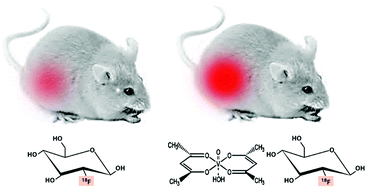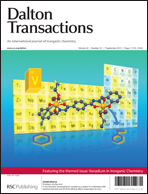The vanadyl chelate bis(acetylacetonato)oxovanadium(iv) increases the fractional uptake of 2-(fluorine-18)-2-deoxy-d-glucose by cultured human breast carcinoma cells†
Abstract
Detection of breast cancer by

- This article is part of the themed collection: Vanadium in Inorganic Chemistry

 Please wait while we load your content...
Please wait while we load your content...